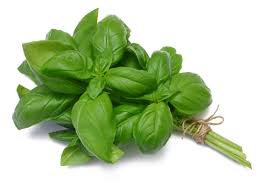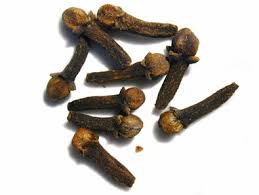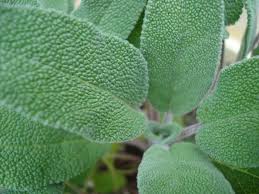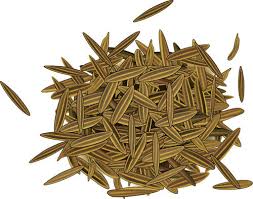Society is a bit too quick to reach for over-the-counter (OTC) meds for relief of everyday ailments like an upset stomach, headaches or muscle aches. We look at these types of drugs as safe because they were not prescribed, but there are plenty of things in them that thin the lining of the gut, add a burden to the liver or kidneys and just overall don’t need to be in our bodies.
Instead, why not turn to nature for relief? Within your own kitchen, you possess all you need to calm, soothe and relax whatever minor ailment may arise.
1) Cinnamon: Listed first because cinnamon is truly a power spice. Just half a teaspoon daily can dramatically reduce blood glucose levels in those with type 2 diabetes. Cinnamon is also proven to reduce triglycerides, LDL (“bad” cholesterol) and total cholesterol, as well as ward off urinary tract infections. The cinnamon we buy in stores is usually called cassia and is not real cinnamon, which is called “Ceylon.” The two spices don’t come from the same plant, but they do both offer an anticoagulant (anti-blood clot) property. The best way to tell that your cinnamon comes from Ceylon is to buy sticks that have multiple layers to them and to grind them yourself with a coffee grinder or a mortar and pestle. The sticks that are one solid piece are cassia.

2) Basil: This herb can be used on skin infections and insect bites. Basil is high in Vitamin A, Vitamin C, phosphorus and calcium. It is also a source of iron, magnesium and potassium. It is thought to help eyesight and the cardiovascular system, and to ease digestive distress. Basil tea can also soothe a headache, calm the nerves and lower a fever.

3) Cayenne: Cayenne’s claim to fame is that it promotes circulation and boosts metabolism as well as offering relief from menstrual cramps and fibroid tumors when consumed internally. Externally, it can be used in a compress and creams as a pain-killer.
4) Cloves: This delightful fall spice is a powerful anti-fungal and anti-microbial, making it a clear choice to promote digestive health. While it tastes fantastic in chai tea, you can also use it externally for dental pain (apply the oil) or add it to a footbath to get rid of athlete’s foot.


5) Parsley: When used externally, parsley relieves itching. Taken inside the body, it is one of the most nutrient-rich, detoxifying herbs we have. It acts as an anti-inflammatory, an anti-spasmodic and a diuretic, helping conditions from colic to indigestion. Whenever you make or get a green juice, be sure to add parsley to it!
6) Sage: Externally, sage is very beneficial in treating acne, gum and throat infections, breast pain and oily hair. Internally, sage is great for mental health. Sage tea has helped ease depression and anxiety for generations.


7) Thyme: We can never have enough thyme, a wonderful anti-parasitic agent that can improve poor appetite, diarrhea, stomach cramps and indigestion. Thyme is a cure for a hangover and doubles as an aid to alleviate symptoms from colds and bronchitis.
8) Cardamom: Cardamom is the “”queen of spices”", second only to black pepper, the “”king of spices”". It is one of the most valued spices in the world. Cardamom is used internally for indigestion, nausea, vomiting can help to cut back excessive phlem. It is also used to prevent stomach pain and flatulence. In ancient Ayurvedic traditions, the cardamom seeds are chewed to sweeten the breath and help reduce the acid effects of caffeine in coffee.


9) Cumin: Loaded with phyto-chemicals, Cumin is high in antioxidants, minerals like iron, copper, calcium, potassium, manganese, selenium, zinc and magnesium and contains high amounts of B-complex. The active principles in the cumin may increase the motility of the gastro-intestinal tract as well as increase the digestion power by increasing gastro-intestinal enzyme secretions. Cumin is also used to help with sleeplessness, and because of it’s antiseptic properties is great to take when you feel a cold coming on.
10) Cilantro: Cilantro is rich in nutrients and is a good source of iron, magnesium, phytonutrients and flavonoids and is also high in dietary fiber. Cilantro has been used for thousands of years as a digestive aid as it stimulates the appetite and aids in gastric juice secretion. It can also aid in lowering blood sugar having hypoglycemic properties, possibly the result of stimulating insulin secretion.

11) Ginger: The root has a stellar reputation for controlling nausea of all types. Studies have shown ginger to be especially effective in curbing motion sickness, morning sickness, and postoperative and chemotherapy-induced nausea. Ginger is an excellent digestive, aiding in the absorbtion of food, and elimination of gas and bloating. Ginger stimulates circulation so it is good for cold hands and feet.

12) Turmeric: This is a powerful dietary spice for auto-immune-related inflammation and pain. Turmeric is also a fantastic source of indirect antioxidants, which means that it boosts and stimulates the body’s own production of antioxidants for hours after consumption. Some of the longest-living people in the world are in Okinawa, Japan. Their longevity is credited to their ability to manage the inflammation process. They do this by drinking turmeric tea daily.
source
The whole Journey
 July 17th, 2012
July 17th, 2012 
 Kim
Kim